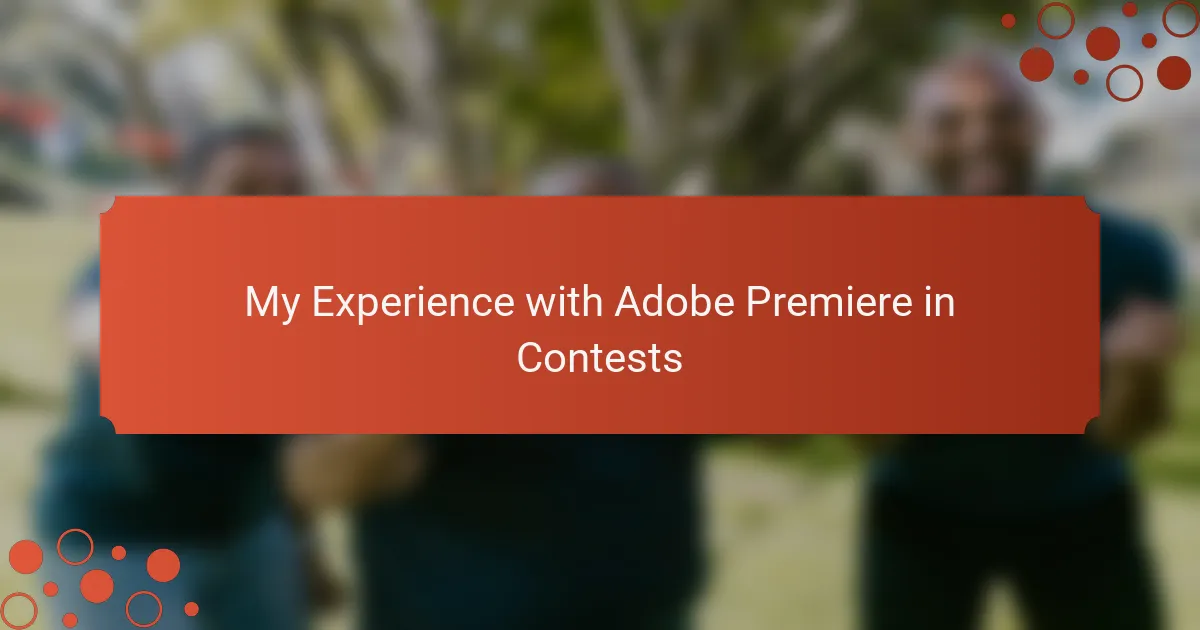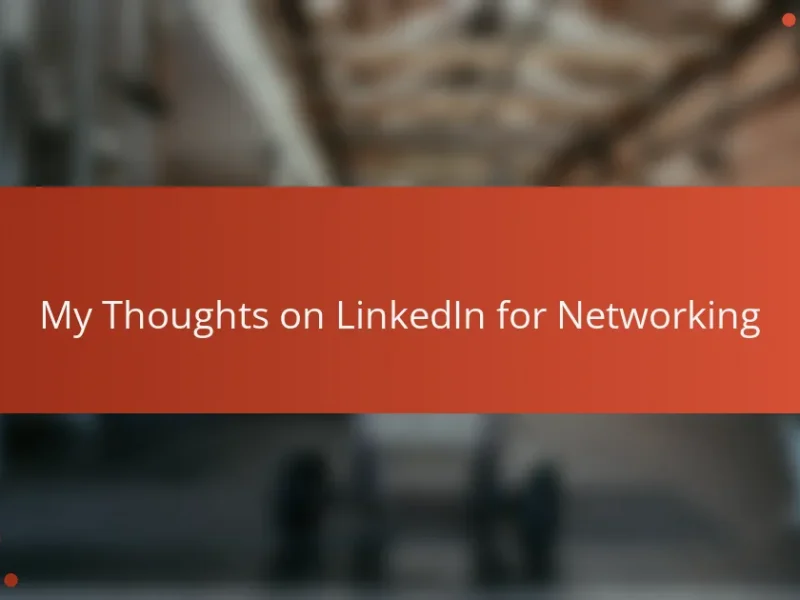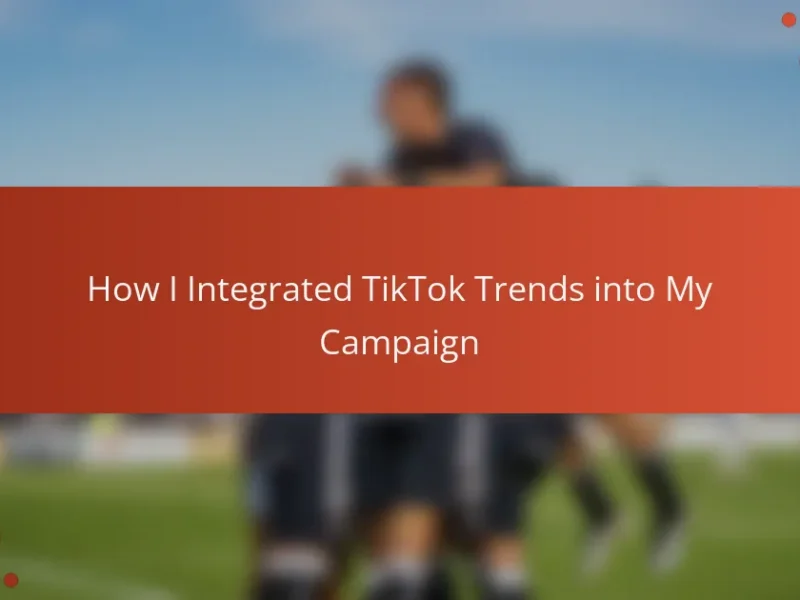Key takeaways
- Understanding contest criteria and aligning your video’s message with the theme is essential for success.
- Emphasizing storytelling and clear editing over flashy effects helps maintain viewer engagement.
- Staying organized and adhering to submission guidelines improves the overall quality of the video.
- Accepting constructive feedback and being adaptable to changes enhances the creative process and final output.
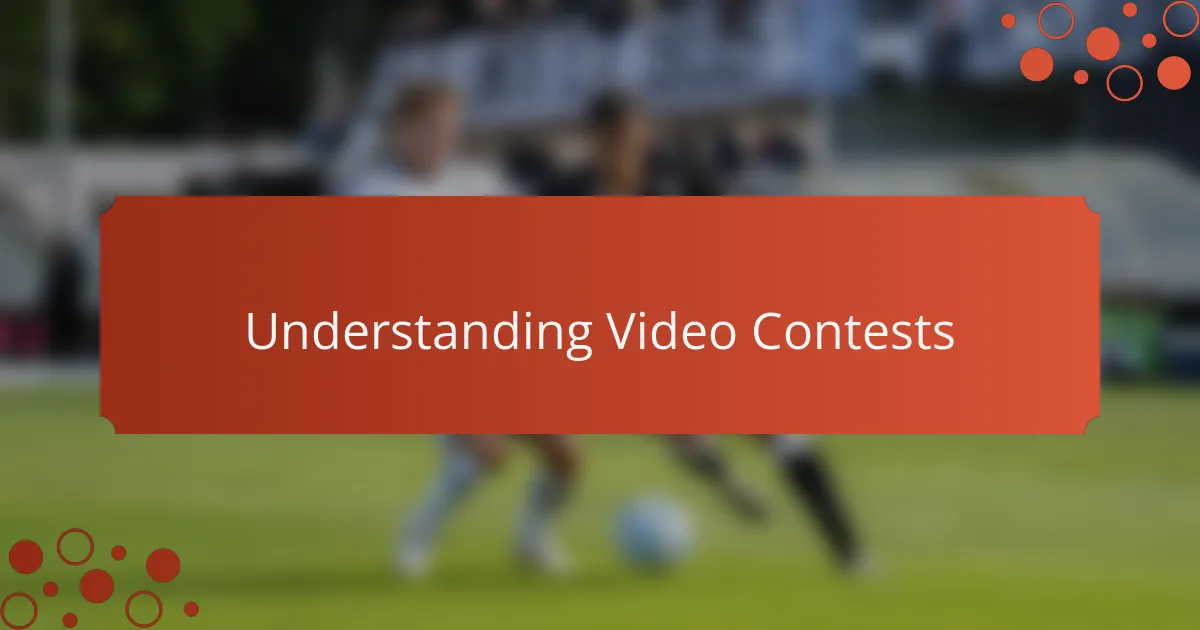
Understanding Video Contests
Video contests are unique platforms where creativity meets competition. Participants are challenged to express their ideas within specific rules and time limits. Have you ever wondered what makes a video truly stand out in such contests?
From my experience, understanding the contest criteria deeply is crucial. It’s not just about flashy edits or effects but how well the story connects with the audience and judges. I’ve learned that aligning your video’s message with the contest theme can make a big difference.
Moreover, video contests often push you beyond your comfort zone. They demand originality, technical skill, and emotional impact all at once. This blend creates an exciting yet sometimes nerve-wracking creative journey, one that teaches you a lot about storytelling and yourself.
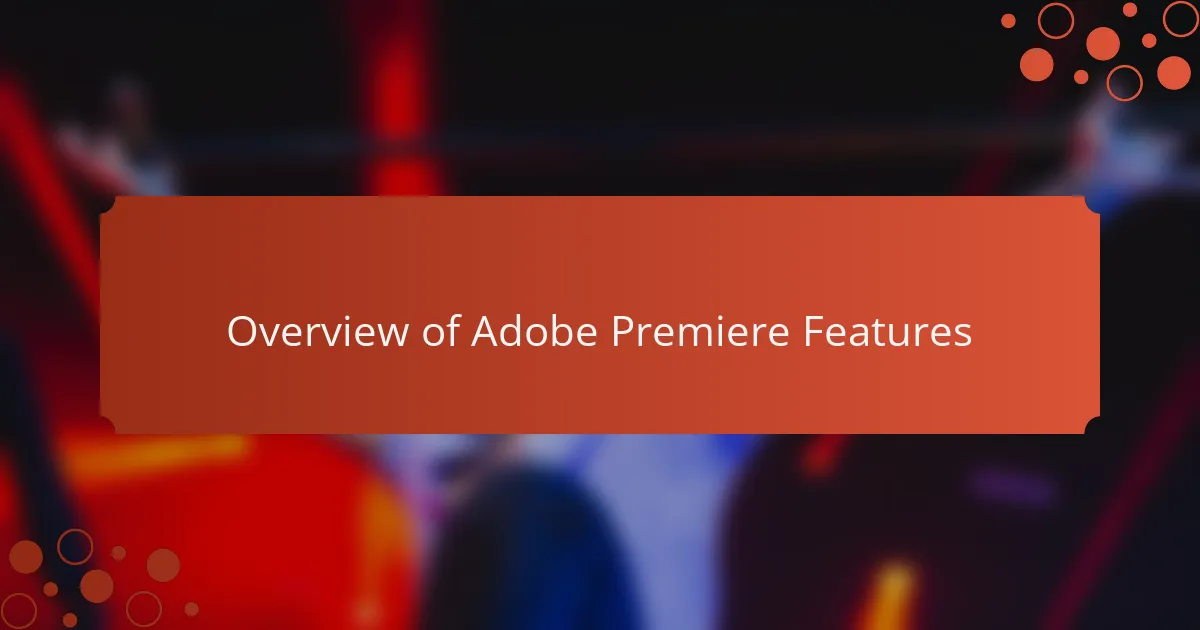
Overview of Adobe Premiere Features
Adobe Premiere packs an impressive range of features that, at first glance, can feel overwhelming. I remember diving into its versatile timeline, where trimming and layering clips became second nature after a bit of trial and error. This flexibility gave me the freedom to experiment, pushing my creativity in ways simpler editors just can’t match.
One feature that truly stood out for me was the advanced color correction tools. I found myself tweaking hues and contrasts late into the night, trying to capture the exact mood I envisioned. Have you ever felt how a slight color shift can completely transform the emotion of a scene? That’s the kind of power Premiere puts right at your fingertips.
And then there’s the seamless integration with other Adobe apps — something that saved me countless hours syncing graphics and audio. Being able to work smoothly across platforms made the whole editing process feel less like a chore and more like crafting a story. For me, that’s what makes Adobe Premiere more than just software; it’s a creative partner in every contest journey.
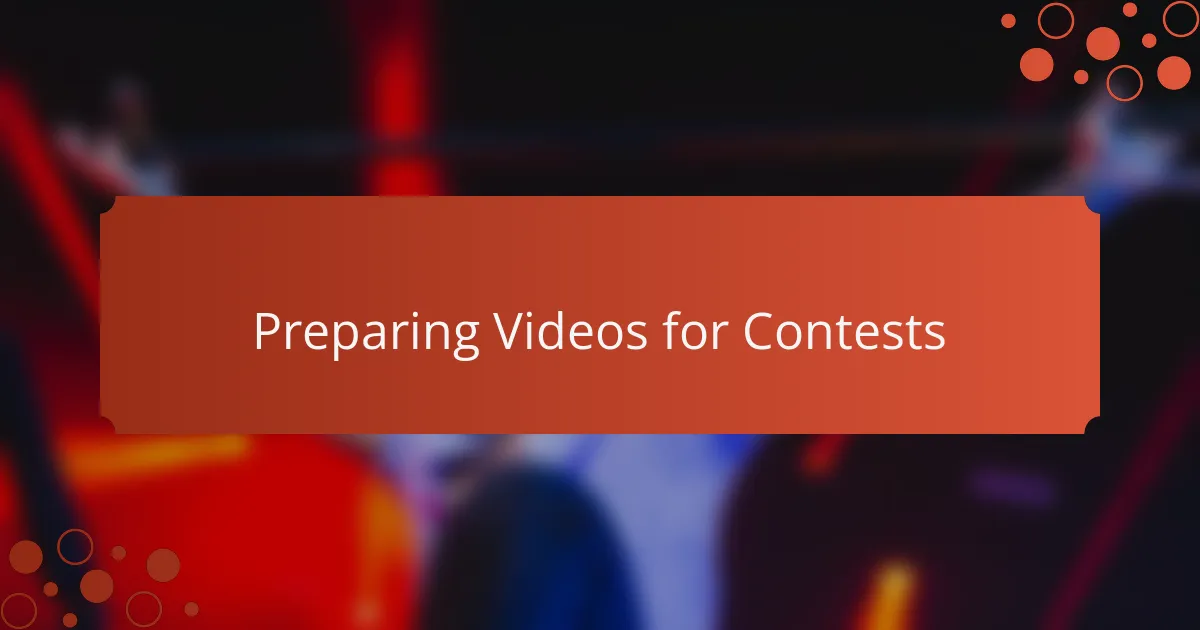
Preparing Videos for Contests
When preparing videos for contests, I always start by carefully reviewing the submission guidelines. Have you ever spent hours perfecting a video only to realize later it didn’t meet the format or length requirements? That taught me the hard way that attention to these details is just as important as creative editing.
I’ve also found that organizing footage early on makes a huge difference. Sorting clips by theme or emotion inside Adobe Premiere helps me stay focused and avoids last-minute chaos. It’s like setting the stage properly before the show begins, which I’ve learned leads to a smoother, more confident editing process.
Another key step for me is exporting the final video using the exact settings recommended by the contest. I remember once rushing this part and ended up with poor quality. Since then, double-checking resolution and compression settings has become a ritual I don’t skip. It ensures my video looks its best when the judges hit play.
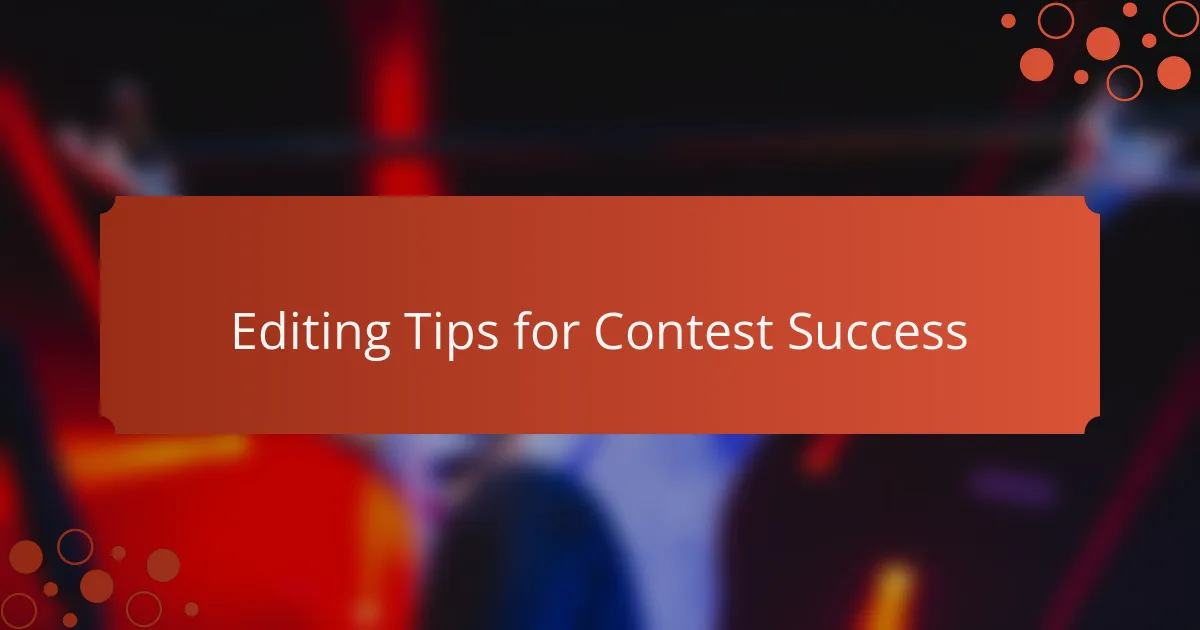
Editing Tips for Contest Success
One editing tip that transformed my contest entries was embracing simplicity. I used to think flashy transitions were the key to impressing judges, but I soon realized that clear, smooth cuts kept the story flowing better. Have you noticed how a well-timed cut can keep viewers hooked without distracting them? That’s the magic I aim for now.
Another lesson I learned the hard way involved pacing. My first contest video dragged in the middle, and feedback pointed that out immediately. Since then, I focus on rhythm—matching visuals and music to keep energy consistent. Adjusting clip length and timing in Premiere’s timeline made this so much easier, turning a rough cut into a polished piece that feels alive.
Finally, sound editing can’t be overlooked. I once submitted a video where the background music overpowered the dialogue, and it really hurt my chances. Now, I spend time balancing audio levels, using Premiere’s tools to make sure every word is heard clearly and every beat enhances the mood. Have you tried tweaking audio gain and keyframe volume? It’s a small step that makes a big difference in conveying emotion and professionalism.
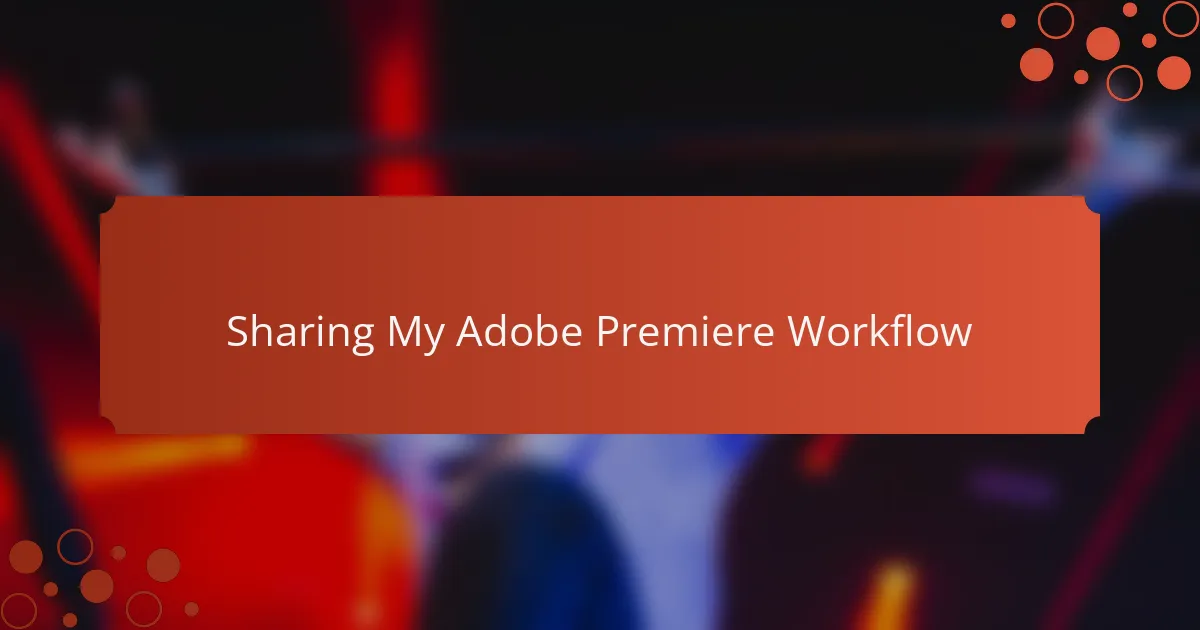
Sharing My Adobe Premiere Workflow
When I sit down to edit in Adobe Premiere, my workflow usually begins with creating a rough cut using simple cuts and trims. Do you know that satisfying feeling when the story starts to take shape on the timeline? For me, this initial phase is all about laying the groundwork without getting caught up in perfection.
As I move forward, I dive into layering effects, color correction, and audio adjustments, but only after the core narrative feels solid. One time, I got so excited about polishing effects early on that I lost track of the story’s flow, which taught me to prioritize storytelling first. This approach keeps my editing focused and efficient, especially under tight contest deadlines.
Finally, exporting the video with contest-specific settings is my last critical step. I’ve learned to save presets within Premiere for different contests, which saves me from scrambling at the last minute. Trust me, having that final export go smoothly feels like crossing the finish line.
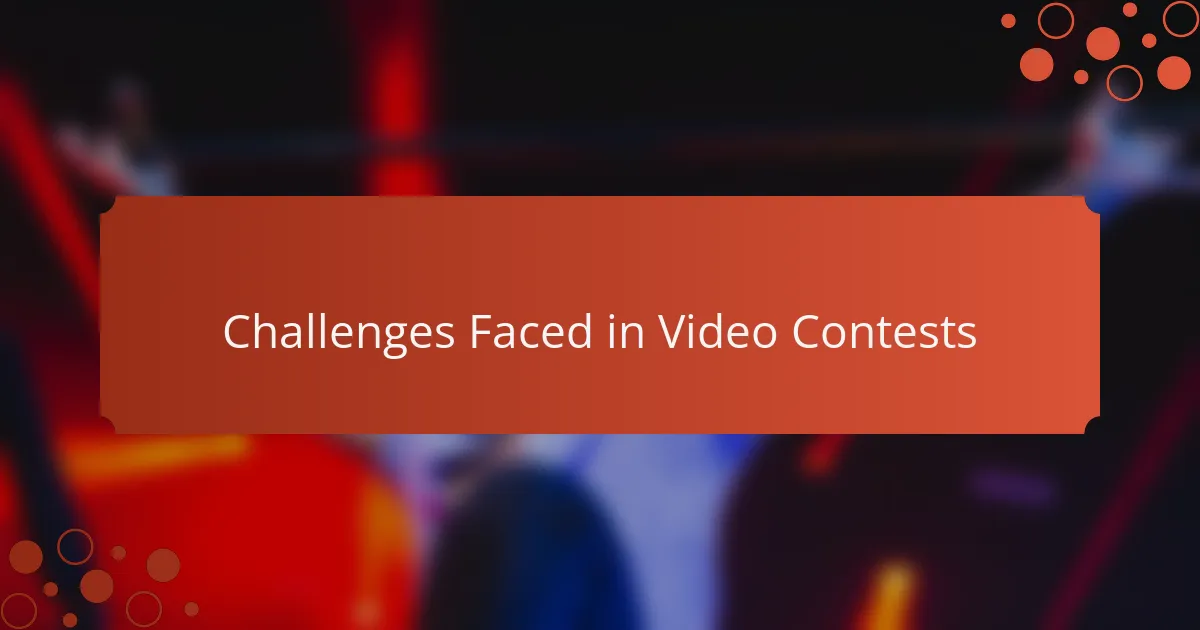
Challenges Faced in Video Contests
Navigating the strict rules and tight deadlines of video contests often felt like juggling flaming torches for me. I remember frantically trying to finish a project only to realize my video exceeded the time limit—talk about a heart-stopping moment. Have you ever faced that last-minute panic when everything seems to slip through your fingers despite your best efforts?
Another challenge was balancing creativity with technical demands. Adobe Premiere gave me endless tools to explore, but sometimes I got lost tweaking color grading or effects, losing precious time needed to refine the story. I learned the hard way that mastering the software matters, but so does knowing when to step back and focus on the narrative itself.
Then there’s the pressure of standing out among fierce competition. It’s tough not to compare your work with slick, professionally produced entries. I often asked myself, how can my video resonate deeply enough to grab the judges’ attention? Finding that unique voice within contest constraints pushed me to dig deeper into my creative instincts—and that challenge, though daunting, ultimately made me a better editor.
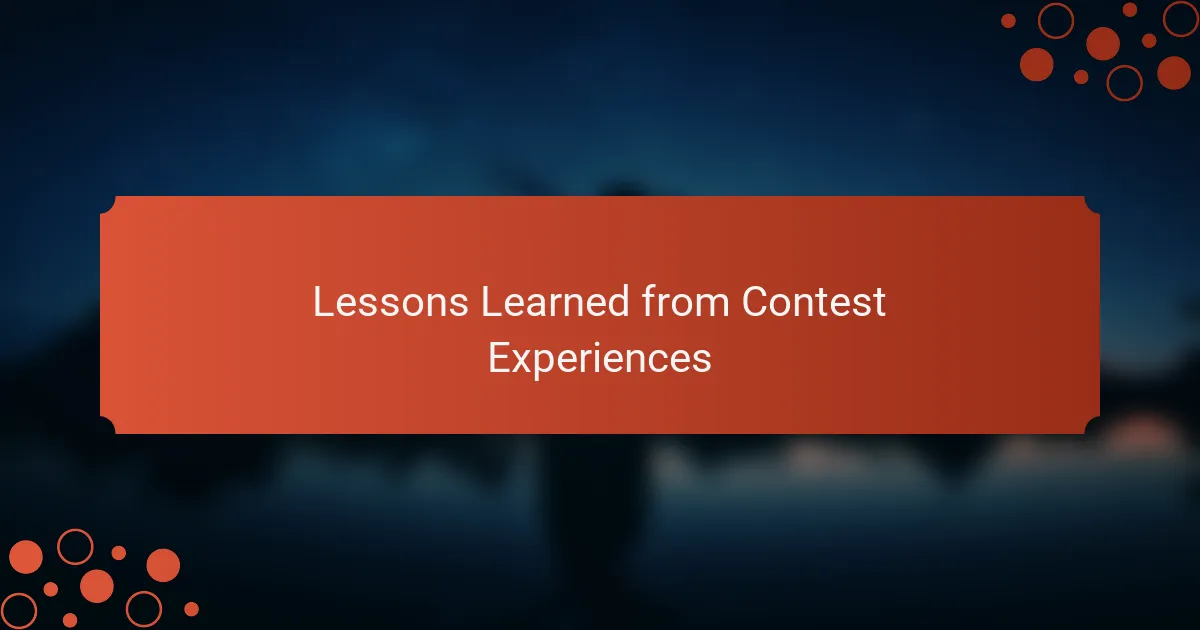
Lessons Learned from Contest Experiences
One lesson that hit me hard was the importance of staying adaptable. There were contests where last-minute rule changes or unexpected technical glitches threw my plans off completely. Have you ever had that sinking feeling when your carefully crafted edit suddenly needs a total rethink? Learning to stay calm and pivot quickly saved my entries more than once.
I also discovered that constructive feedback is a gift, even when it stings at first. After pouring my heart into a video, hearing criticism felt tough, but looking back, those insights refined my craft in ways I hadn’t imagined. How often do we shy away from critique, missing the chance to grow? Embracing feedback became a turning point in my contest journey.
Finally, patience proved to be a quieter, yet powerful teacher. Editing under pressure tempted me to rush, but I learned that stepping back—taking breaks and revisiting the project fresh—uncovered details I’d overlooked. This slower, more mindful approach lifted my videos from good to memorable. Isn’t it interesting how sometimes the best editing happens when you’re not editing at all?
